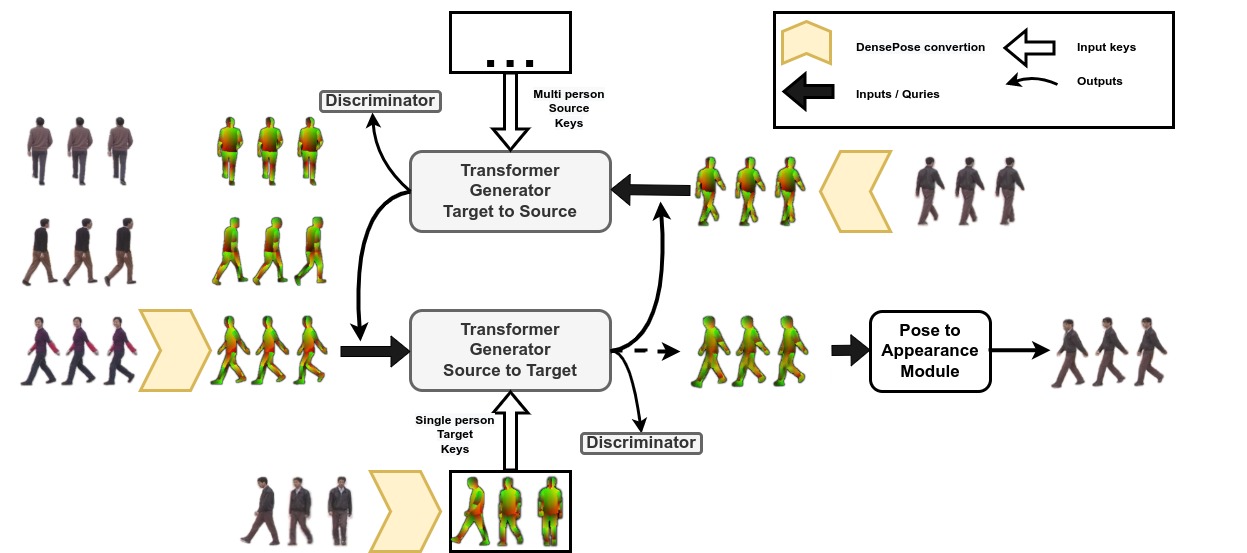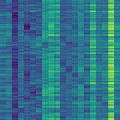
|
|
|
|
|
IEEE/CVF Winter Conference on Applications of Computer Vision (WACV), 2023 |
|
Paper |
Github (Coming soon ...) |

|
|
|

The generators of CTrGAN are based on transformers. The inputs to each generator are IUVA gait images from the training set and Keys. The outputs are natural gait poses. |

CTrGAN consists of two branches that are connected cyclically, feature encoders and decoders and Transformers which perform self- and cross-attention between the features. |
| Source Object |
Source Pose (IUV) |
V2V only Re-targeted Object |
CTrGAN Re-targeted Pose |
CTrGAN + V2V Re-targeted Object |
A. Without using CTrGAN
|
B. Using CTrGAN
|
 |
CTrGAN: Cycle Transformers GAN for Gait Transfer, Shahar Mahpod, Noam Gaash, Hay Hoffman, Gil Ben-Artzi Arxiv |
Acknowledgements |